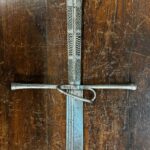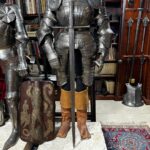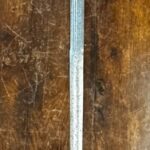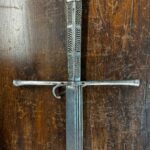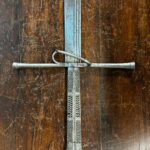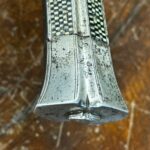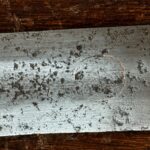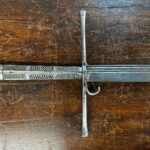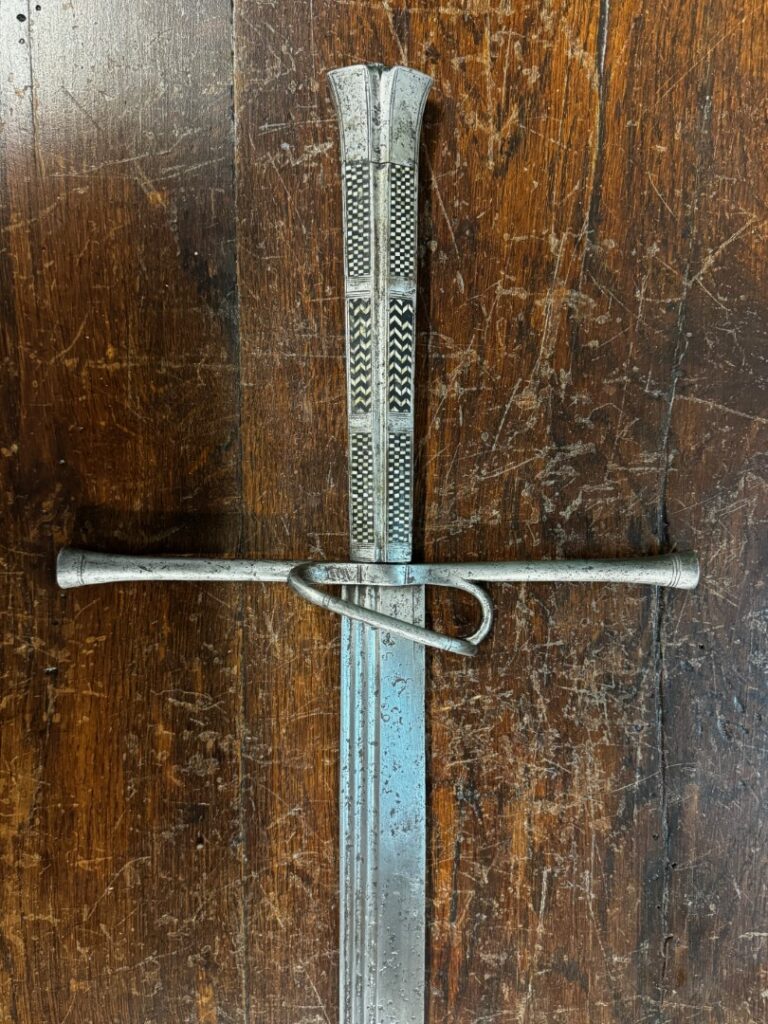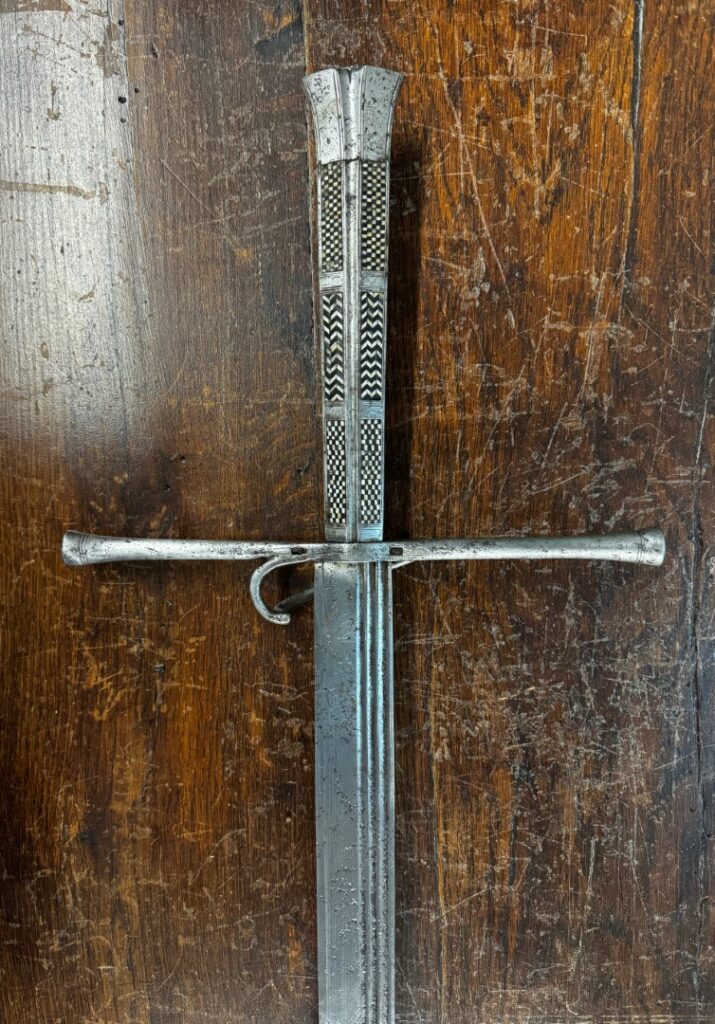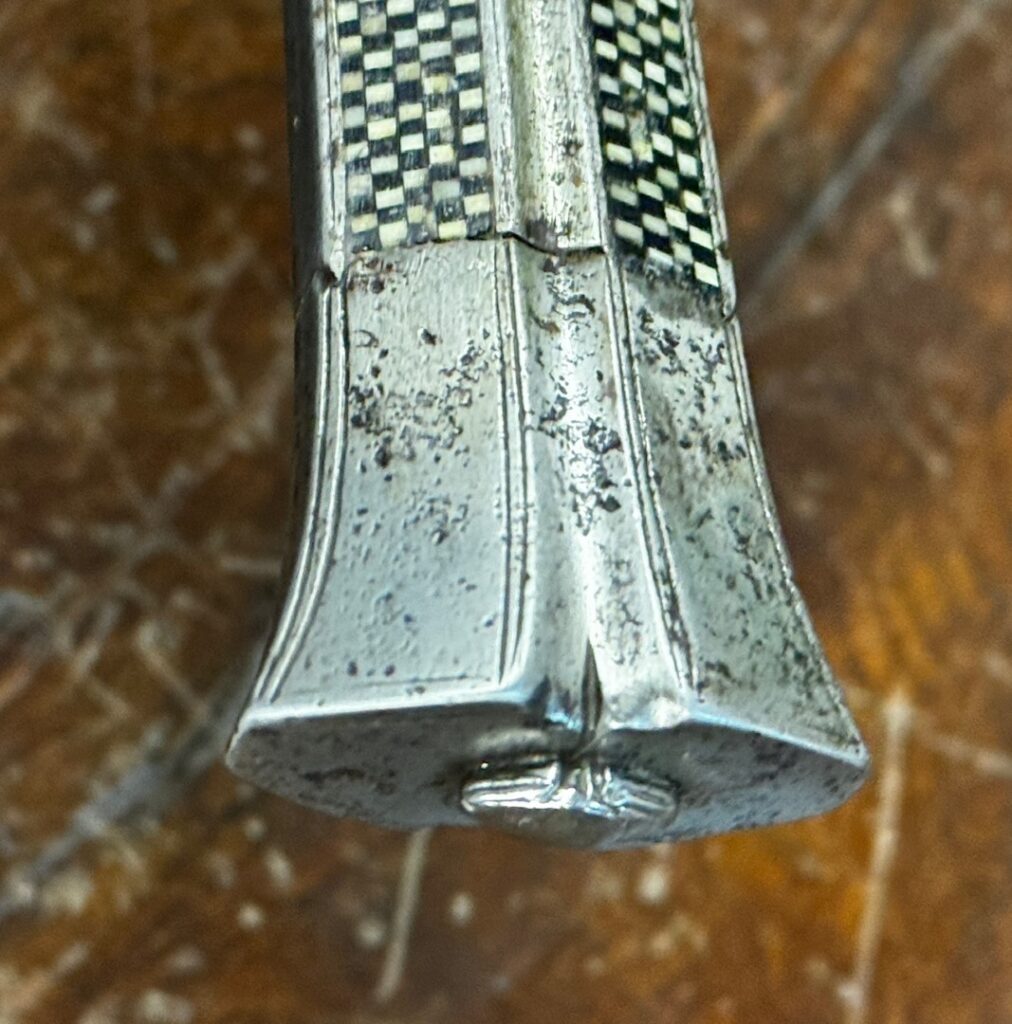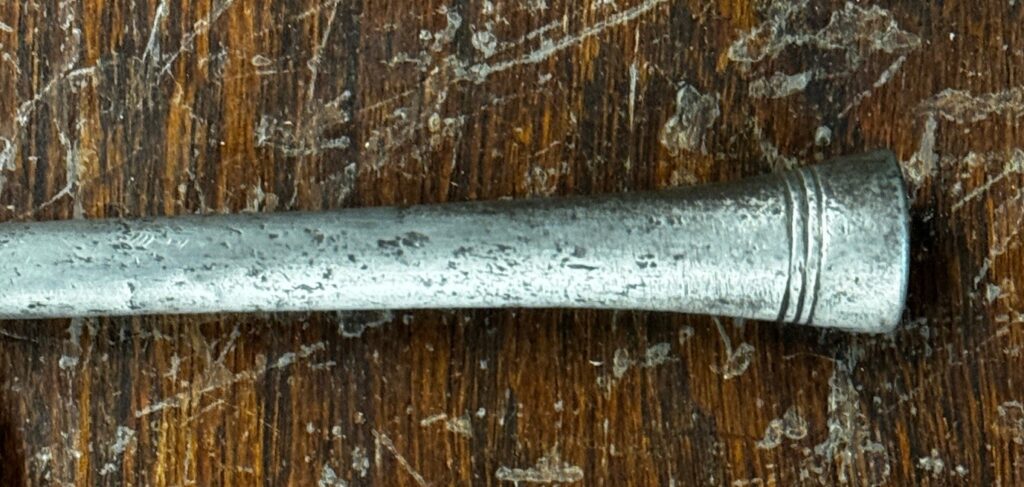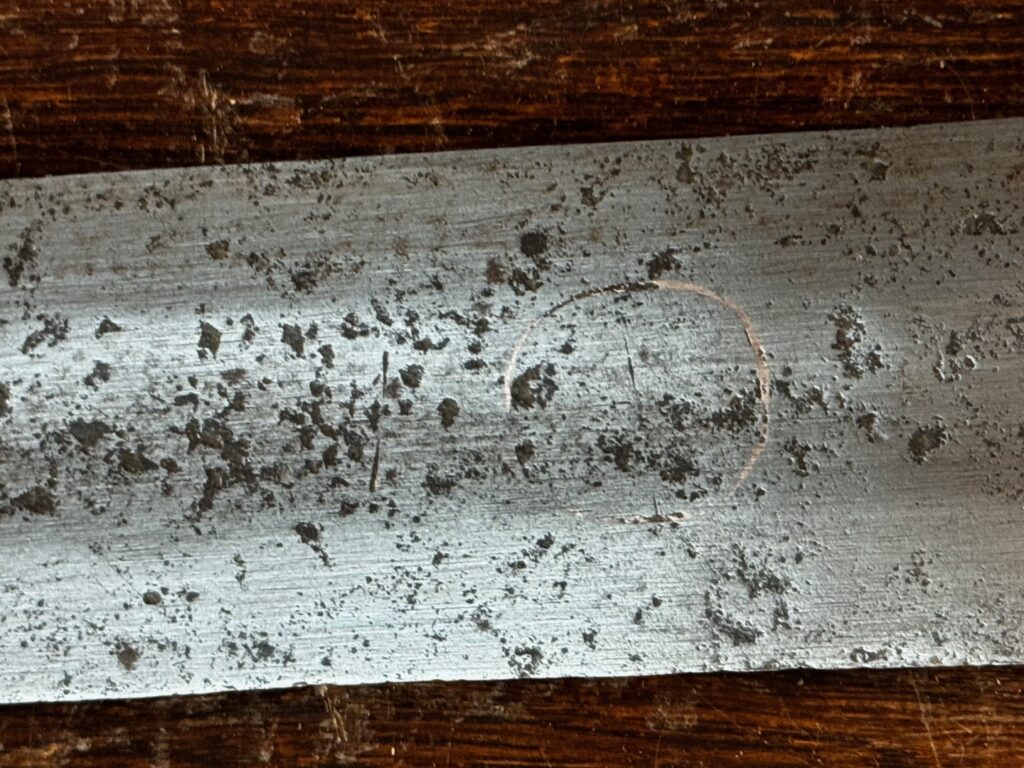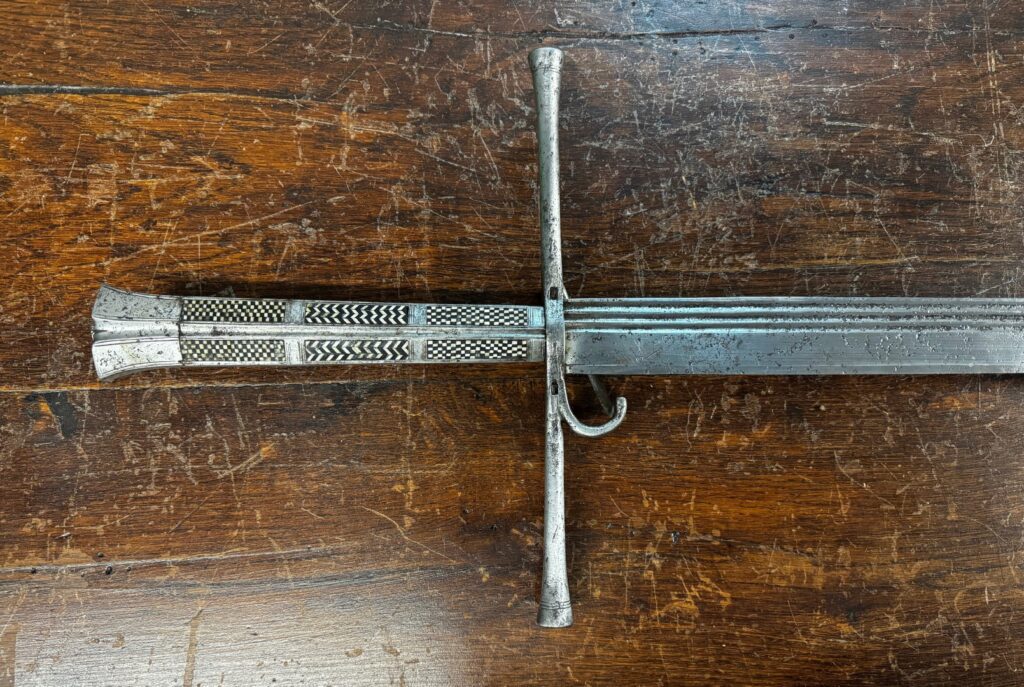1708) AN EXCEPTIONAL, RARE, ELEGANT AND MASSIVE GROSSES KRIEGSMESSER, CIRCA 1510:
Introduction: In German, “grosses kriegsmesser” translates to “large/great war knife.” This uniquely distinguishable type of sword was popular in Hungary and had a strong following in Germany, where, in the 15th and 16th centuries, it was adopted for warfare. They are somewhat rare, and most examples are ground finds (see page 288, items 12 and 13 in my book). This is a superb above-ground example that would complement any world-class collection or museum.
Description: Triple fuller double-edge blade with a false edge over the fullers, blade tapering to a sharp point, Oakeshott Style 10 guard gently widening at the ends, side ring, grip forged of one piece with integral birds head pommel with curvatures at the top, wide fuller at the center of the grip, three inlays in a delicate checkered and chevron pattern of bone and stag horn inset on both sides. Remnants of an Imperial orb on the blade, conserved/restored to museum standards. Length: 53 inches.
Discussion: Emperor Maximilian I was very fond of kriegsmessers and owned three on display at the Hofjagd und Rustkammer (#A123, #A145, #A173). The grosses kriegsmesser is a single-edged sword, usually with a strong curvature on the blade, which qualifies it as a saber. The “saber” is believed to have been introduced to Eastern and Central Europe by Central Asian nomadic invaders as early as the 6th century (see page 267 in my book or
above). Some kriegsmessers have a hook or bird’s beak pommel, others have no pommel at all, and some have a pommel built into the tang. The kriegsmesser is believed to have been exported to Western Europe from the Hungarian Bohemian region or current-day Hungary. In the woodcut Triumph of Maximilian (see page 408 in my book or pictured above), there are five soldiers with kriegsmessers and shields. Maximilian referred to these troops as Gefecht or Fenders.
Provenance: From an Austrian collection that started after WWII.
Comparable: A similar one in the world-famous Kunsthistorisches Museum in Vienna, Austria.
Conclusion: Early magnificent swords of this caliber are getting harder and harder to find in the collectors market. This sword makes a monumental statement because of its elegance, size, construction, and condition. It screams grandeur, class, and style. This is an exceptional addition to any collection or museum. ACT-NOW!!!*

